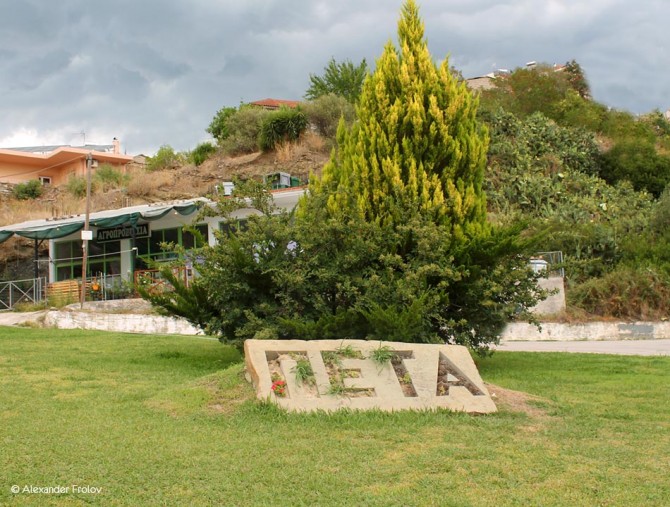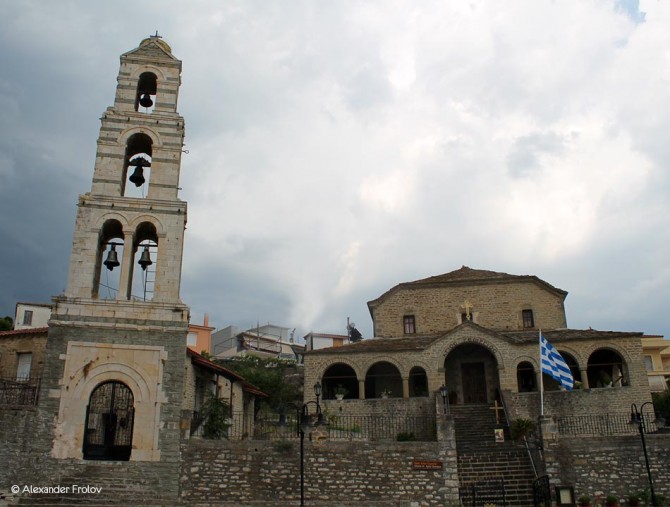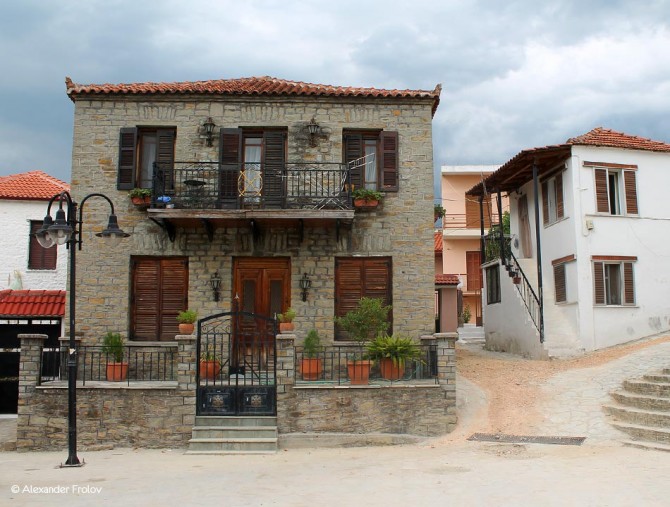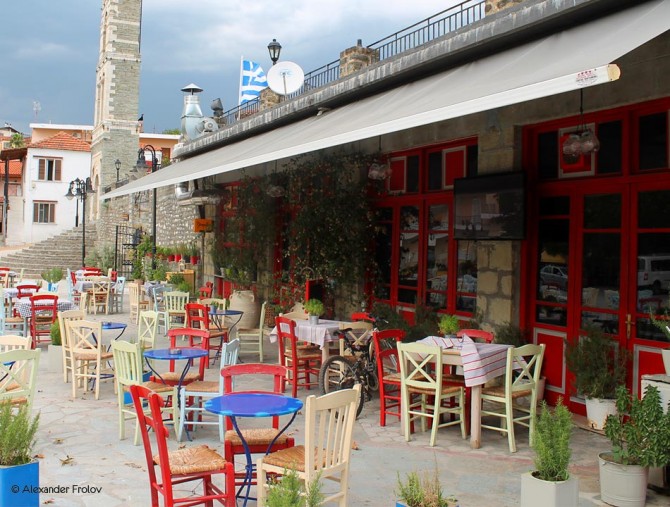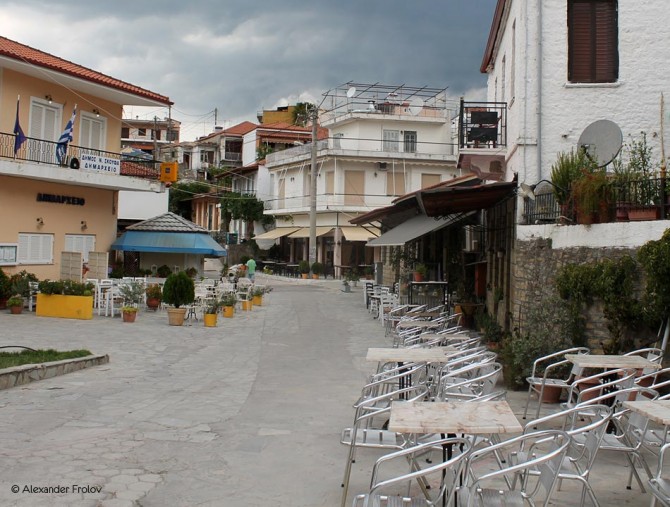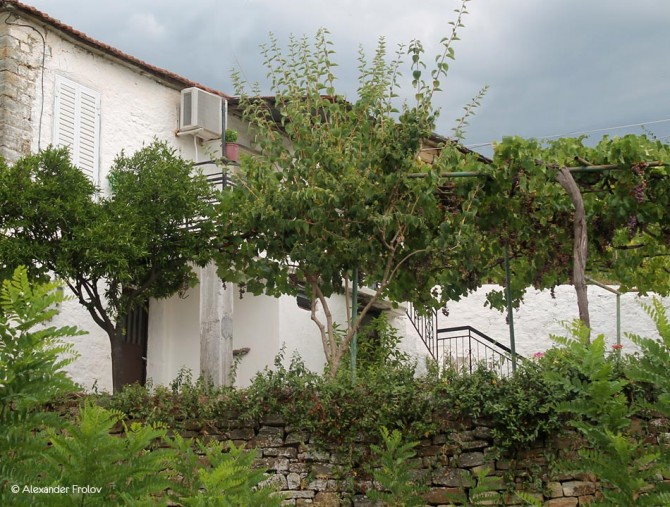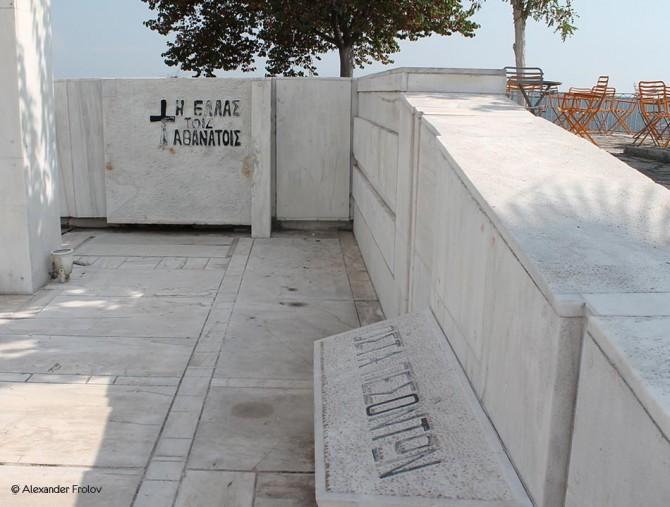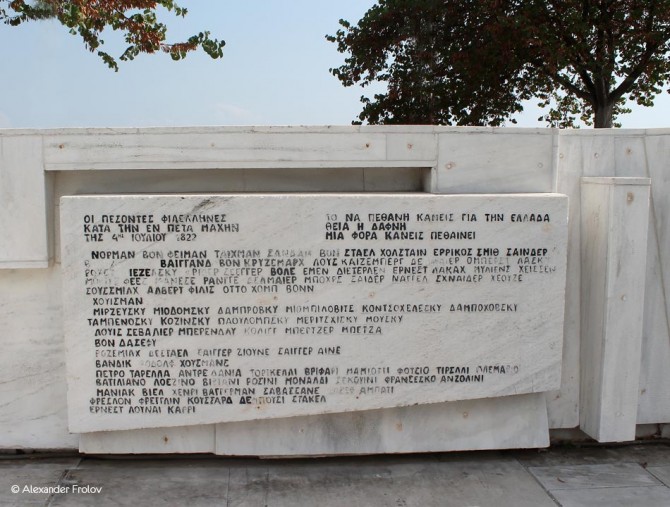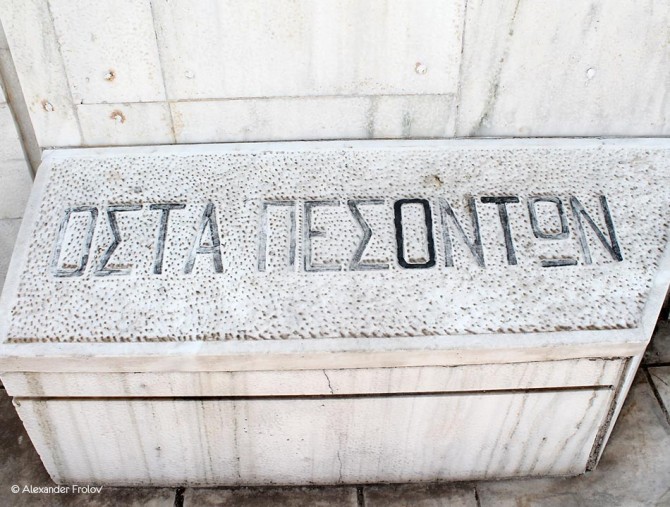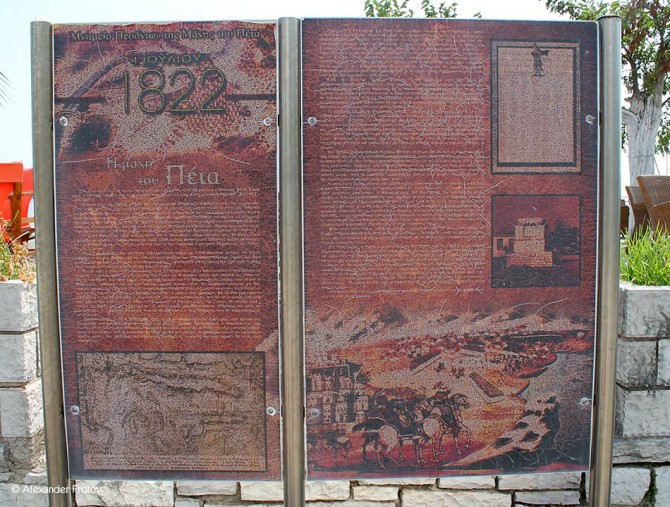Пета
4 июля 1822 года тут произошло выдающееся сражение, в котором 1200 греческих повстанцев дали бой восьми тысячам турок. Надо сказать, что на стороне греков сражалось также немало филэллинов – грекофилов из других стран. Бой длился с рассвета до позднего вечера. Несмотря на неравенство сил, греки поначалу даже побеждали, однако, в итоге победа досталась туркам. Об этом драматическом эпизоде в наши дни напоминает мемориал, посвященный погибшим грекам, а также иностранцам-грекофилам. Их география довольно широкая: Италия, Германия, Франция, Бельгия, Голландия, Швеция, Дания и Польша.
Помимо мемориала Пета достаточно красива: архитектура сохранила свой стиль с давних времен. На главной площади под платанами расположились множество кафе и ресторанов, где можно попробовать блюда местной кухни. Тут же по традиции находится храм. Храм Святого Георгия – это трехнефная сводчатая базилика с черепичной крышей, построенная в XVIII веке и восстановленная в 1850 году. Особенно впечатляет колокольня храма. Внутри него можно увидеть шелковую эпитафию 1647 и Евангелие 1765 годов.
Несмотря на то, что Пета место не туристическое и отелей здесь нет – побывать тут все же стоит. От Арты совсем недалеко – всего 12 километров.
Как добраться до деревни Пета в Эпире:
- на машине из Афин (349 км) по трассе Е65
- на машине из Арты (12,2 км) по трассам E951/E05 и национальной Арта-Трикала
- на автобусе из Арты, автовокзал на улице Кристаллис, тел. +30 26810 28 314/26 374
Фото и текст: Александр Фролов
Peta
Built on a hill with view to the city of Arta, Peta is a lovely mountainous village surrounded by olive and orange trees.
It could be just another beautiful village of Epirus, but what makes Peta more special is the namesake historical battle that took place in July 4, 1822, where 8,000 Turks fought with 1,200 Greeks (among them there were also 93 philhellenes -Italians, Germans, French, Swiss, Belgians, Dutch, Danes, Swedes and Poles). The battle lasted from the dawn to the evening, and although in the beginning it seemed that the Greeks and the philhellenes would be the winners, at the end of the day the Turks managed to defeat them. As a reminder of this historical battle, at the top of the village there is a War Memorial, dedicated to the Greeks and the philhellenes who lost their lives in the battlefield that day.
Today Peta is a beautiful village that in majority retains its local architectural style, although you will see among the traditional houses and a few more modern buildings. Highlight of the village is the quaint square with the typical plane trees and the traditional stone cafes where you can enjoy your coffee and delicious local specialties. At the square there is also the Church of Agios Georgios, a three-aisled vaulted basilica with a tiled roof, built in the 18th century and renovated in 1850. What will impress you is the remarkable bell tower, but do not miss to enter the church as well, to admire the embroided silk epitaph of 1647 and the Gospel of 1765.
Peta is not a tourist destination, so do not expect to find any accomodation. However, if you stay in Arta (which is just a breath away), Peta is a very good choice for a short visit.
How to get there: From Athens (distance 349 km) via E65, from Arta (distance 12,2 km) via E951/E05 and National Highway Arta-Trikala. By bus from Arta: There are daily regular bus routes from Arta to Peta and vice versa. Arta bus station (Krystallis Square), tel.: +30 26810 28 314/26 374.
Τext: Marilou Pantazi

